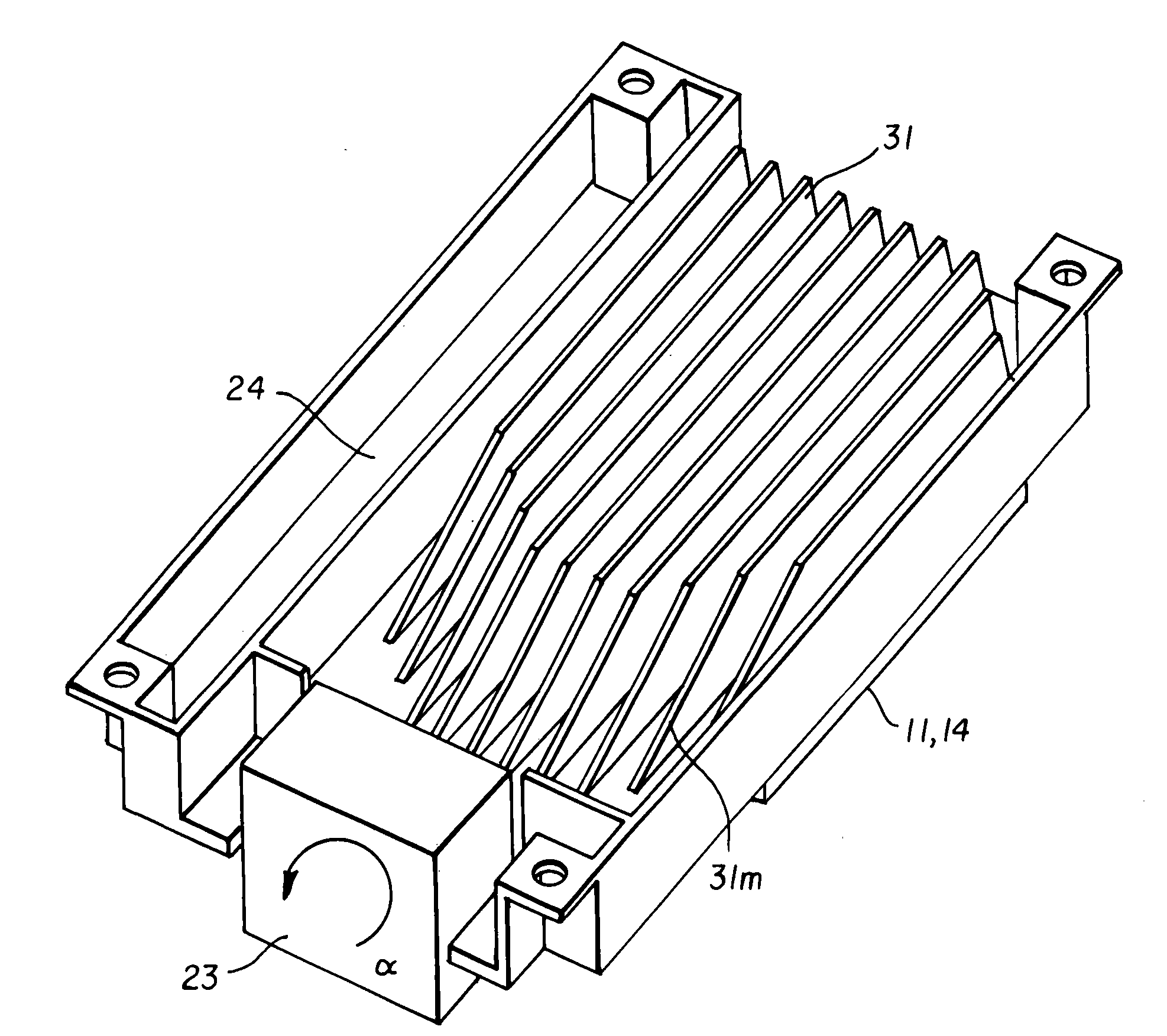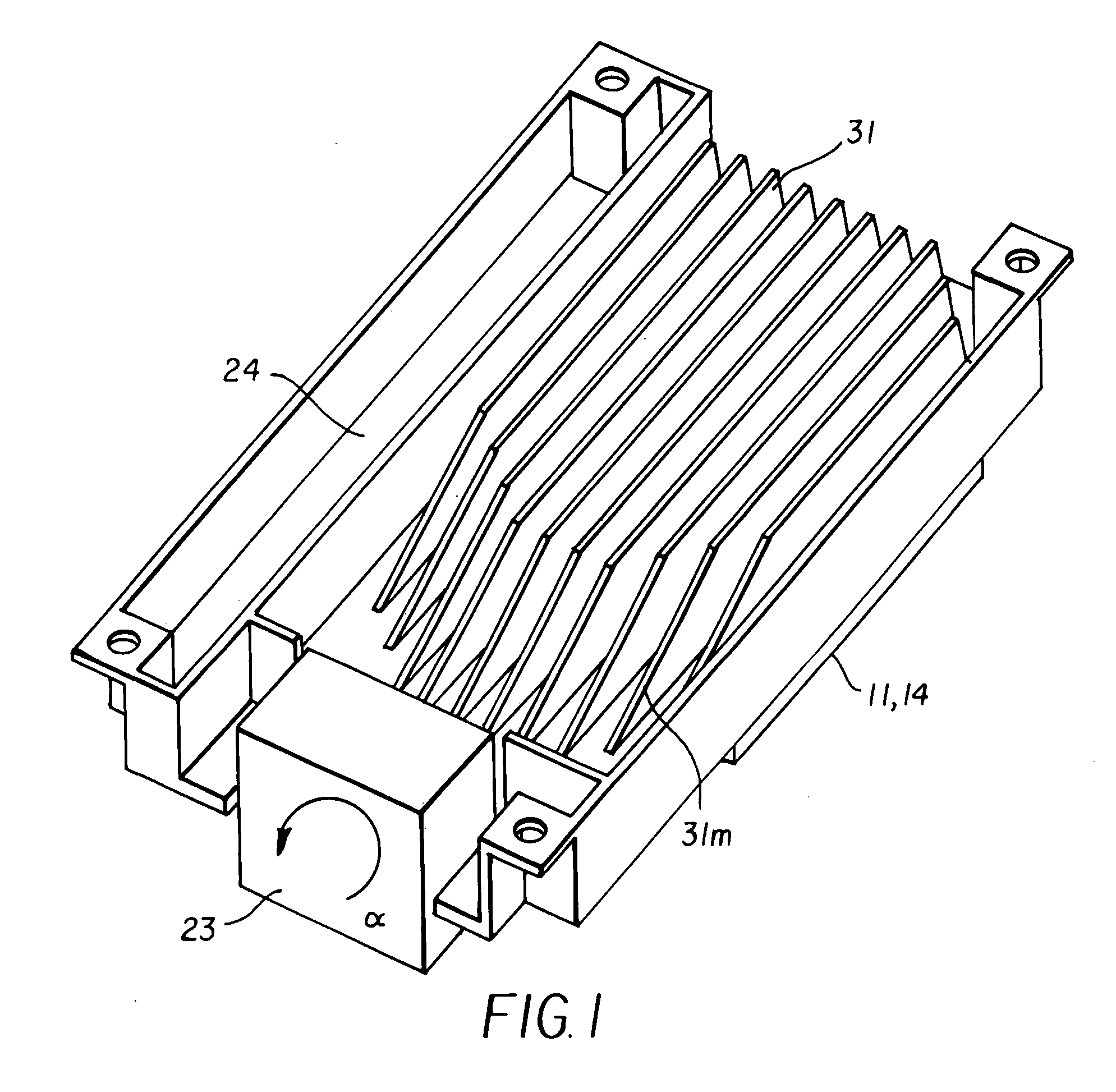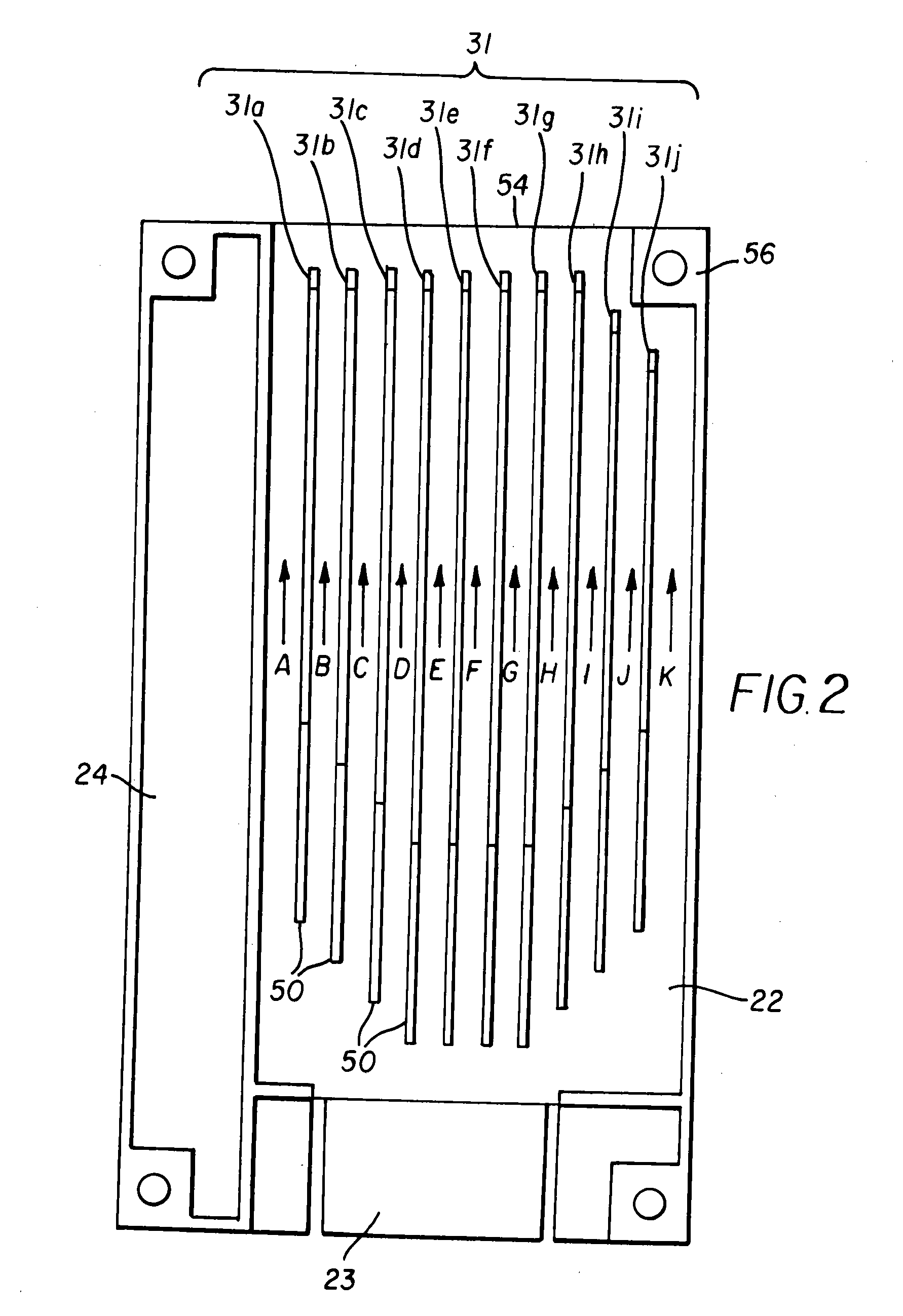Heat sink
a heat sink and heat sink technology, applied in the field of heat sinks, can solve the problems of low cooling performance relative to cost, high manufacturing cost of heat sinks, and inability to achieve high heat dissipation performance of heat sinks, so as to reduce weight, and improve heat dissipation performance
- Summary
- Abstract
- Description
- Claims
- Application Information
AI Technical Summary
Benefits of technology
Problems solved by technology
Method used
Image
Examples
first embodiment
[0037]FIG. 3 is a diagram showing an example of the air-velocity distribution between the fins in the heat sink in a case where the air-velocity distribution of cooling air in flow paths A to K indicated by arrows between the fins 31a to 31j appearing in FIG. 2 is measured. As shown in FIG. 3, as compared with the air-velocity distribution in the conventional art illustrated in FIG. 12, the air velocity can be made more uniform, and the average air velocity can be made higher.
[0038]One of the reasons why the air velocity can be made more uniform is that pressure loss is reduced because the fins 31a to 31c and 31h to 31j, which are not located in the vicinity of the cooling fan 23, are made shorter, and their distal ends 50 are located further downstream or away from the inflow end face 52. Another reason why the air velocity can be made uniform is that the fins 31 are provided with the slopes 31m so that the height of each fin 31 from the base surface gradually increases from the u...
second embodiment
[0042]In the second embodiment illustrated in FIGS. 4 and 5, fins 41 located on the delay side in the rotational direction of the cooling fan 23 (right side as viewed in FIG. 5) (as indicated by the arrow α) are formed to be shorter than fins 41 located on the advance side in the rotational direction of the cooling fan 23 (left side as viewed in FIG. 5), and distal ends of fins 41f to 41j on the delay side in the rotational direction of the cooling fan 23 are located downstream of distal ends of fins 41a to 41e on the advance side in the rotational direction of the cooling fan 23.
[0043]FIG. 6 is a diagram showing an example of the air-velocity distribution between the fins in the heat sink according to the second embodiment in a case where the air-velocity distribution of cooling air in flow paths A to K indicated by arrows between the fins 41a to 41j appearing in FIG. 5 is measured. As shown in FIG. 5, as compared with the air-velocity distribution in FIG. 3, the air velocity in th...
PUM
 Login to View More
Login to View More Abstract
Description
Claims
Application Information
 Login to View More
Login to View More - R&D
- Intellectual Property
- Life Sciences
- Materials
- Tech Scout
- Unparalleled Data Quality
- Higher Quality Content
- 60% Fewer Hallucinations
Browse by: Latest US Patents, China's latest patents, Technical Efficacy Thesaurus, Application Domain, Technology Topic, Popular Technical Reports.
© 2025 PatSnap. All rights reserved.Legal|Privacy policy|Modern Slavery Act Transparency Statement|Sitemap|About US| Contact US: help@patsnap.com



